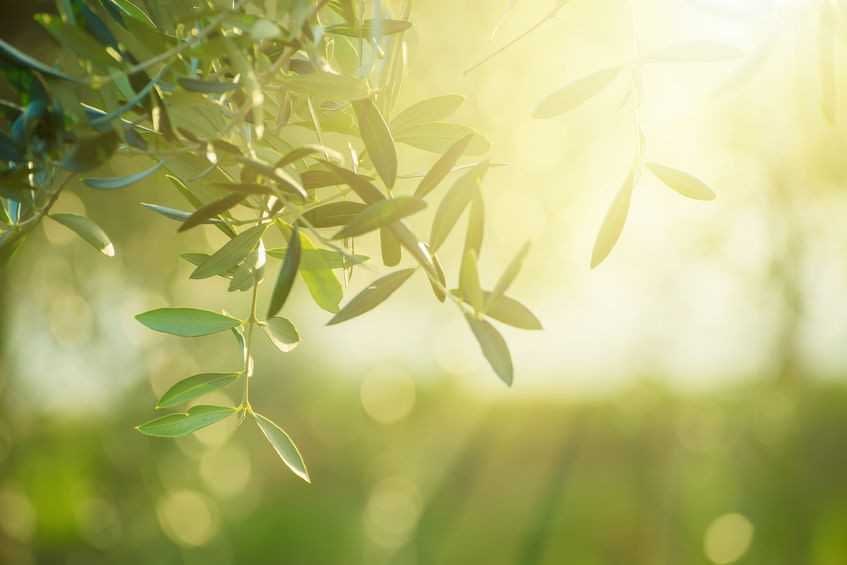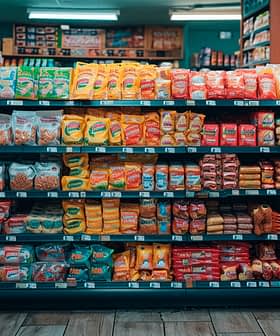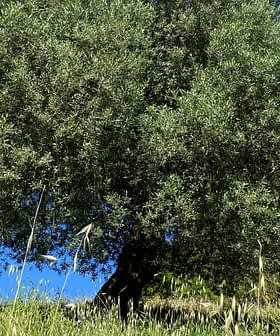Scientists have shown that the chemical composition of olive leaves may depend on the time of year in which they are harvested.
Researchers in Brazil focused their study on three well-known cultivars in a single orchard, measuring their content of polyphenols and other characteristics.
The seasons have a strong influence on the content of bioactive compounds, with higher contents being observed for most compounds in the leaves in the summer.
Their findings show that some olive varieties might offer a significantly higher antioxidant and phenolic profile than others, and that summer harvesting might provide the best results for the growing number of farmers and companies investing in olive leaf-derived products.
“We investigated Arbequina, Manzanilla and Picual olive trees,” Alexandre Lorini and Deborah Murowaniecki Otero, two of the authors of the study, told Olive Oil Times. “We spent approximately one year collecting the samples from the trees, and one more year carrying out the analysis, both in the laboratory and with statistical analysis.”
See Also:Research NewsThe scientists collected samples of leaves from 50 trees of each of the three olive varieties at the end of each season. They monitored the daily temperatures of the orchard located in the southernmost Brazilian region of Rio Grande do Sul as well as the solar radiation to which the trees were subjected throughout the year. All examined trees were grown under the same agronomic and environmental conditions, in the same olive groves on a private property.
“The climate that the trees are exposed to varies according to the seasons,” the two researchers said. “In the hot seasons, we have temperatures that might reach around 104 °F (40 ºC) in addition to an average solar radiation above 15 megajoules per square meter each day, while in the cold seasons temperatures can fall to 32 °F (0 ºC) and the solar radiation measure below 15 megajoules per square meter each day.”
In the distinct conditions of the different seasons, scientists collected about five kilograms of leaves that were then gathered in a specific reservoir and taken to the chromatography laboratory of the Federal University of Pelotas. The material was crushed and ground in a mill with the aid of liquid nitrogen, stored in polyethylene packaging and kept at −112 °F ( – 80 ºC).
The goal of the researchers has been to quantify the phenolic compounds (apigenin, hydroxybenzoic acid, kaempferol, luteolin, oleuropein, quercetin, rutin and tyrosol), determine the total flavonoids, measure the hydrolyzable tannins and the condensed tannin content, as well as the total carotenoids and chlorophylls.
“We realize in this work that the climatic variation that occurs in the seasons of the year in the place where the trees are planted affects the metabolic composition,” the pair of researchers said. “The same effect does not always occur in all cultivars, which shows that each cultivar can adapt in different ways.”
“Hot seasons influence the synthesis of polar compounds such as phenolic acids and flavonoids in all the cultivars we tested,” they added. “The nonpolar compounds, such as carotenoids and chlorophylls, are affected in different ways, where in the cultivar Arbequina there was greater synthesis in the change to cold seasons, while in Manzanilla and Picual, there was an increase in the change to the hot seasons.”
The results show that for the total of phenolic compounds, flavonoids and hydrolyzable tannins in the leaves, there is no interaction between the cultivars and the seasons. Thus, the statistics of the separate variables showed that leaves of the cultivar Manzanilla have higher concentrations of phenolic compounds and hydrolyzable tannins.
Still, when evaluating only the seasons and their contribution to the increase of certain bioactive compounds, it was noticed that winter was the season during which the lowest synthesis of phenolic compounds occurred.
“In the summer, it was possible to observe a greater synthesis of these compounds, which indicates that the temperature has a direct influence on the mechanism, where high temperatures can result in the activation of protective mechanisms of the olive tree, and as a consequence induce greater synthesis of these compounds,” the researchers wrote in the study.
See Also:Panel Rejects Health Claim for Olive Leaf ExtractAs for the contents of the investigated phenolic compounds, researchers noted that the Manzanilla leaves showed higher amounts of apigenin, hydroxybenzoic acid and tyrosol throughout the year.
The same was observed for the leaves of the Arbequina cultivar, regarding the contents of kaempferol and luteolin. The highest oleuropein and rutin contents were observed in all seasons in the leaves of the cultivar Picual.
The most antioxidant activity has been expressed by the extract of the Manzanilla leaves while individual phenolics underwent significant interaction between cultivars and seasons “showing, that the seasons have a strong influence on the content of bioactive compounds, with higher contents being observed for most compounds in the leaves in the summer,” the researchers wrote.
“Finally, the hypothesis tested was proven, revealing that the cultivars chosen for planting, as well as the existing climatic changes with the season changes, affect the metabolic profile of olive leaves (Olea europeae L.),” they added.
While the results offer hints to local growers, researchers do not know if those results could be true elsewhere, including in the Mediterranean basin, the evolutionary home of the olive tree.
“We do not know the Mediterranean climate very well, but in our readings, we saw that there is a difference between summer and winter, just like in the region where our experiment was carried out,” the scientists said. “Taking this into account, we believe that the results may be similar, but more research is needed. We believe that this type of study would be very interesting.”
The research, explained the two authors, may offer new insights for consumers of olive leaf extracts and products as well as to the pharmaceutical industry.
However, a second aspect, noted the scientists, “is to show the oil extraction industry that in the season that they collect the olives, we have a certain content of compounds and that they can take advantage of the leaves to enrich their oils.”









